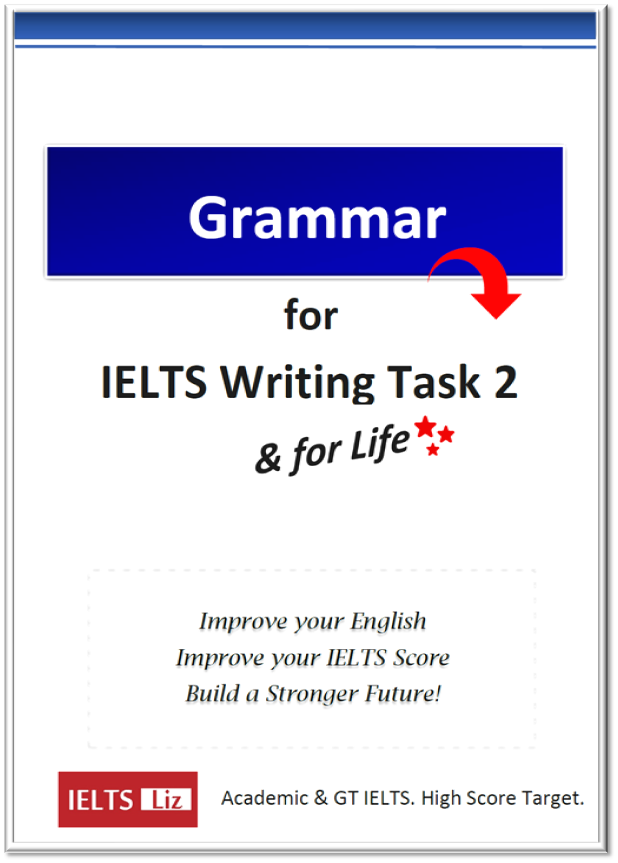These phrases below should be avoided in IELTS Writing Task 2 Essays. They are overused but also not really appropriate for an IELTS essay.
IELTS writing task 2 is a formal essay but it is also a test of your own English language. You can’t cheat by learning sentences to use in your essay. Certainly, you can learn words, but the sentences you write must be created by you during your test and relate directly to the topic (the specific topic) given to you. The examiner is trained to spot sentences which are not typical of your level of English.
Phrases to Avoid in your IELTS Essay
1.
This essay will discuss both sides and give an opinion at the end.
This sentence is poor because it is used for the thesis statement but contains no main points. It is a memorised sentence of 15 words. It only repeats the instructions but adds no information to the essay. Try to avoid using such sentences and just present your answer clearly. Another similar sentence is “I shall put forth my arguments to support my views in the following paragraphs” which should also be avoided. Don’t forget that while these sentences might be fine for a usual academic essay, they are not appropriate for an English language test.
2.
With the development of science and modern technology…
Many students use this expression to start their essay. It is only suitable to use if the essay is about science and technology. It is overused and confusing for the reader if the topic is not science or technology. You don’t need any expression to start your introduction, just paraphrase the essay question directly. Learn how to write an introduction for writing task 2.
3.
In the modern era, … / Since the dawn of time ….
This is overused in introductions. Most essay questions are about current issues so you don’t need to put in a time frame unless it is about an issue in the past compared to the present. “Since the dawn of time…” is not a relevant statement for most IELTS issues and should be avoided. Some students also use “Nowadays” to start their essay. Again this is overused. Try to avoid these phrases and just paraphrase the information given by IELTS.
4.
This is a highly controversial issue.
Most essay questions in IELTS are not controversial. Controversial means that it is deeply debated and causes strong feeling, for example “the death penalty” which results in a person’s death is controversial but “watching sport on TV or playing it” is not controversial. 99% of all essay questions in IELTS will not be controversial so don’t use this phrase. Also be careful writing “highly debatable” as this is also overused.
5.
The crux of the discussion is …
This is a sentence which is used too often. It would be better to write “The most important aspect…” or “One of the key issues is…” as they are more natural to use in writing.
6.
For example, a recent study from the IMF showed that… / Research indicates that…
The examples you give in IELTS writing task 2 do not need to come from published sources or known research. They can just be an example of a situation: “For instance, the majority of working people do not have time to cooked balanced meals at home which is why ….”. Certainly, you might write this type of research question in an academic essay for university, but IELTS essays are different – IELTS is a test with specific requirements for band scores.
7.
It can broaden a person’s horizons.
I have seen this written in so many essays and so have examiners. It would be better to write about “learning more”, “opening their mind to something” or “developing deeper understanding of something”. Don’t learn sentences, just write naturally.
8.
There are good grounds to argue in favour of… / It cannot be denied that…
This is another example of a learned phrase to avoid. It would be better to write more naturally “One reason that X is important / crucial …”. Using more natural language avoids the examiner thinking you are memorising phrases. Also the phrase “it cannot be denied” is very much overused and mostly used incorrectly. “It cannot be denied” means it is 100% fact but most essay contain opinions which are not fact. Therefore, avoid this phrase.
9.
In a nutshell, …
Many students use this idiom to start their conclusion. It is informal and not appropriate to use in IELTS essay writing. To learn how you can start your conclusion, follow the link.
10.
… the aforementioned arguments offer insights into vindications for the impression that…
This is a typical sentence that should be avoided in a conclusion. You only need to restate the main points clearly without using learned phrases.
RECOMMENDED FOR YOU
- Using idioms or quotes in your essay
- 100 Free IELTS Essay Questions
- IELTS Opinion Model Essay
- ALL MODEL ESSAYS & TIPS FOR WRITING TASK 2
.







